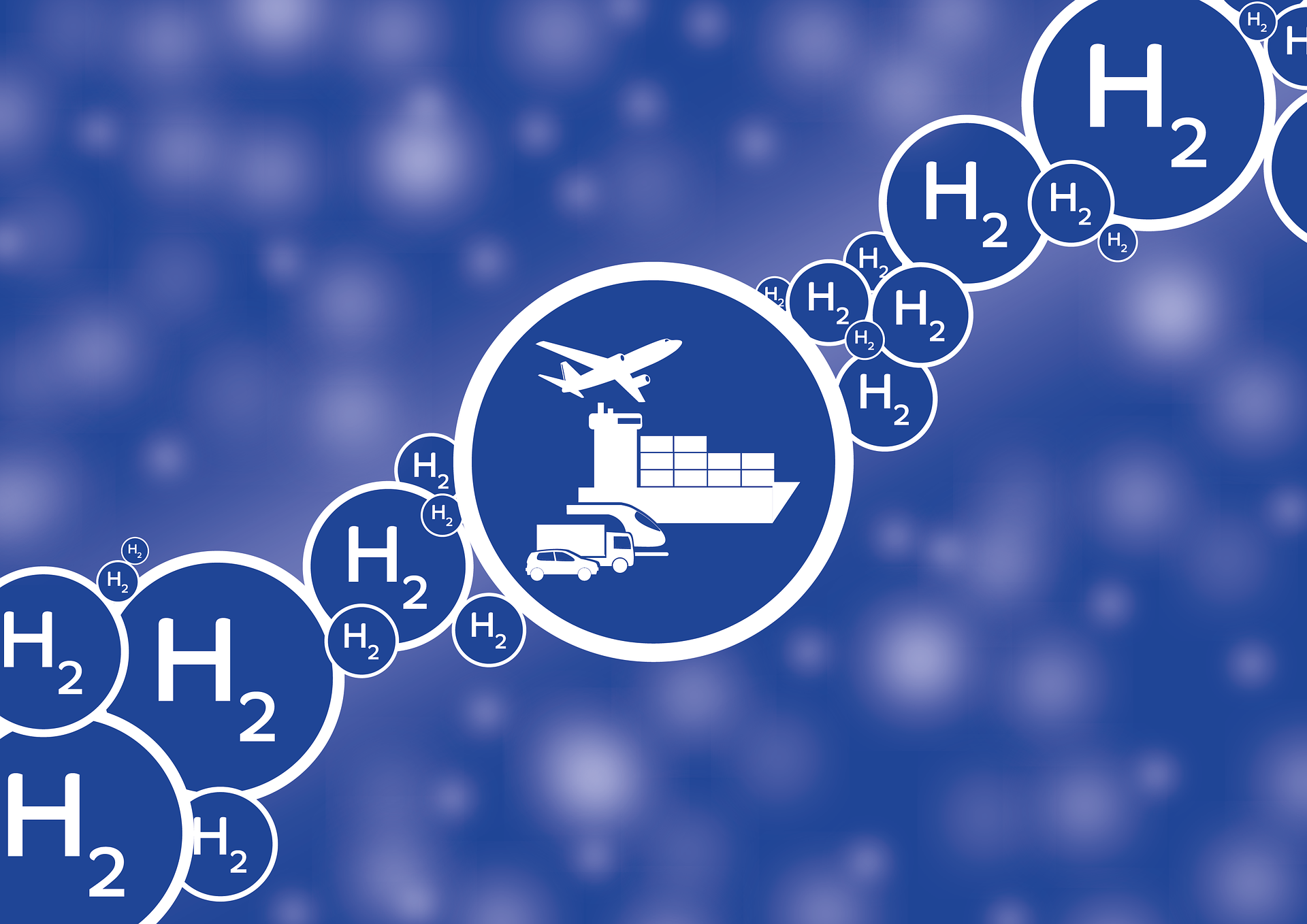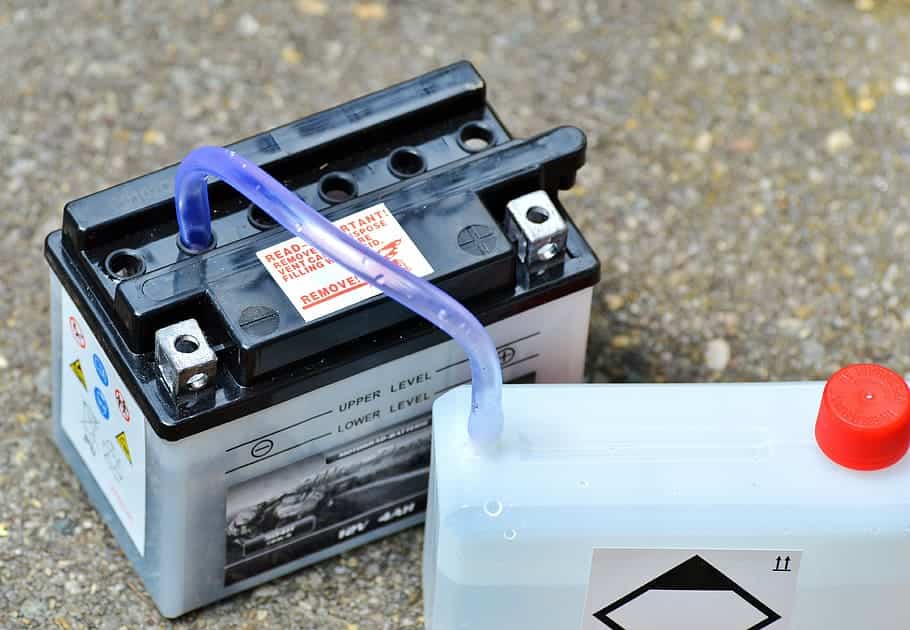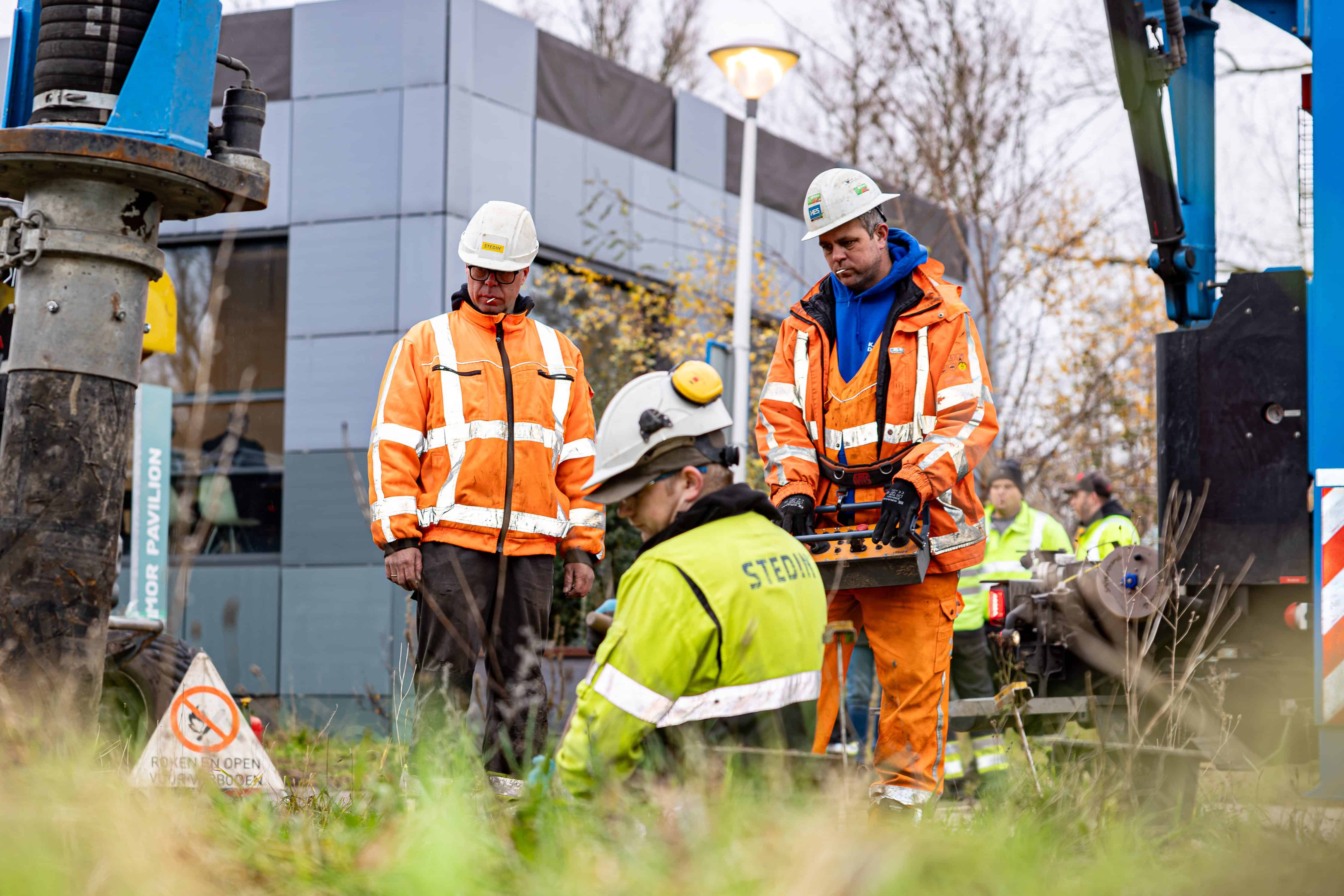
Graphene has been considered a wonder material since its discovery because it combines several outstanding properties. It is thin and light while being stable and pliable, and also has high electrical conductivity. Many applications are already possible, while many are yet to be explored. Graphene also shows promise for the development of ‘tanks’ that can be used to store larger quantities of hydrogen.
Storing hydrogen
Graphene is a modification of carbon and has a two-dimensional structure. Hydrogen atoms can be temporarily stored on its surfaces and then reused for various processes. But to store the largest possible quantities of hydrogen, it needs large surfaces. This is because the properties of the graphene layer can only be optimally utilized if there is a maximum amount of active surface area in a minimum volume.
Three-dimensional arrangement
But to obtain a maximum of surface area in a compact form, graphene must be transferred from a usual two-dimensional arrangement on a substrate surface to a three-dimensional structure. This was the challenge faced by Dr. Stefan Heun at the Istituto Nanoscienze of the Consiglio Nazionale delle Ricerche (CNR) in Pisa, Italy. To achieve economic relevance, a ‘tank’ should be able to store at least five kilograms of hydrogen, while not exceeding a weight of 100 kilograms or a volume of 100 liters. If such a quantity of hydrogen is to be stored, more than 10 square km of graphene are required. A three-dimensional arrangement of graphene is therefore inevitable.
Also interesting: Start-up of the day: fashioning graphene out of food waste
Porous structure
He found the relevant expertise at the Institute for Sensor and Actuator Systems at the Technical University of Vienna, Austria. Here, Professor Ulrich Schmid‘s group has been researching processes for years that make it possible to integrate extremely fine, porous structures into dense materials in a controlled manner. This is because many material properties can be influenced over a wide range by selectively controlling porosity. In the process, the research group succeeded in developing an electrochemical process that makes it possible to etch tiny holes and channels into certain materials, such as the semiconductor silicon carbide. The process consists of several steps using very specific solvents, electric current and UV irradiation.

Photo: The preparation chamber of the electron microscope where the graphene is produced.
Targeted functionalization
Dr. Stefano Veronesi, a member of Dr. Heun’s research group at the Istituto Nanoscienze, explains what the application of this process means in terms of hydrogen storage: “Graphene can bind (store) molecular as well as elemental hydrogen on the surface. At room temperature, however, only elemental hydrogen binds well to graphene. Molecular hydrogen, on the other hand, forms only a very weak bond with the graphene surface. By selective functionalization (“grafting”) of the graphene surface, the ‘storage’ capability of the graphene surface can be significantly increased even at room temperature. How much hydrogen can be stored is determined by the graphene surface area present – the more graphene, the more hydrogen can be stored.”
Research target
There are different ways to make graphene. In the research consortium with Istituto Nanoscienze and the University of Antwerp, Belgium, the team from the Vienna University of Technology worked with silicon carbide (SiC) – a crystal consisting of silicon and carbon. The research goal was to show that it is possible to create the two-dimensional material graphene on a three-dimensional substrate. To do this, silicon carbide was made porous in a targeted manner and its surface was subsequently converted into graphene.
Silicon carbide
If the surface of silicon carbide is heated at high temperatures and ultra-low ambient pressure, the silicon evaporates and the carbon remains. To subsequently obtain a graphene layer on a 3D surface, the researchers developed an electrochemical etching process that turns the solid silicon carbide into the desired porous nanostructure. This process removes approximately 42 percent of the volume. The remaining nanostructure is then heated in a high vacuum by the researchers in Pisa to trigger the formation of graphene at the surface.

Photo: The image on the right shows a schematic representation of the structure. The yellow areas show the porous structure. The black hexagonal lattices show the formation of graphene at the surface of the porous structure.
Findings
The success of the experiment was investigated by experts from the Institute for Electron Microscopy for Material Science (EMAT) at the University of Antwerp, Belgium. There it was shown that many graphene sections had indeed formed on the intricately shaped surface of the 3D nanostructure. Thus, it was possible to prove that graphene can also be generated in a 3D structure – a groundbreaking discovery for the development of a hydrogen ‘tank’ capable of storing a few kilograms of hydrogen at low pressure and at room temperature. Functionalized graphene is extremely promising for this application, says Professor Schmid.
Chemical sensors
Another field of application for large graphene surfaces is chemical sensors, which can be used, for example, to detect rare constituents of gases. “When gas molecules dock on the surface of graphene-based gas sensors, they detect the changes in the electrical conductivity of the graphene layer. Depending on the gas molecule, it then either donates electrons to the graphene layer (donor) or accepts electrons from the graphene layer (acceptor). This exchange of electrons changes the conductivity of the graphene layer. Due to the ultra-thin graphene layer, this measurement principle is extremely sensitive and enables the detection of single molecules, explains Dr. Georg Pfusterschmied, a member of Professor Schmid’s research group and co-author of the study.
Gas sensors have applications in various industries, including fire detection, leakage location, emission measurement, detection of warfare agents such as explosives or poison gas, and indoor air quality determination.
Also of interest: A new process for precision perforation of material layers
Publication details:
S. Veronesi et al., 3D arrangement of epitaxial graphene conformally grown on porousified crystalline SiC, Carbon 189, 210 (2022). https://www.sciencedirect.com/science/article/abs/pii/S000862232101201X?via%3Dihub







